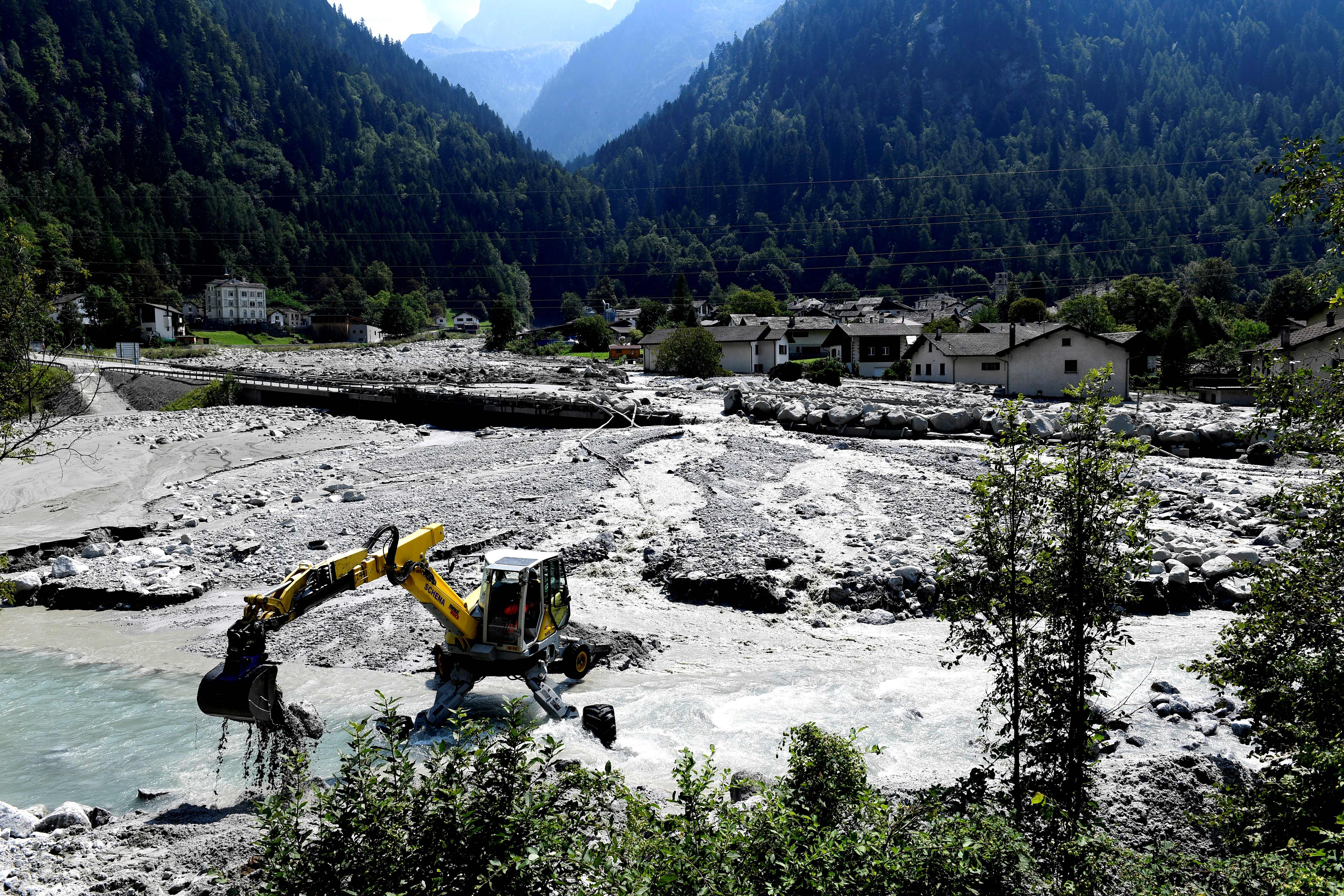Public safety officials were partly prepared when the biggest landslide ever recorded in Switzerland roared through a mountain village in late August, killing eight people. For years, geologists had been monitoring the impacts of global warming in the surrounding mountains, and, in late July, they issued a warning that a big chunk of the towering Piz Cengalo could break away and threaten the town of Bondo.
But nobody was ready for the size and scope of the slide, which started near the top of the 11,000-foot peak and traveled more than a mile and 8,000 vertical feet to the valley floor, killing eight climbers, destroying a major highway, and surrounding the town with piles of sludge and rubble more than 30 feet deep in places.
Scientists, who are still investigating the slide, say it began because an unusual amount of water loosened and lubricated the rocky debris, enabling it to move faster and farther than expected. And since there was no exceptional rainfall, they suspect that global warming simply melted veins of ice and soil that have been frozen in the mountain since the last ice age, 10,000 years ago.
The Swiss town in question was evacuated safely, thanks to the extensive monitoring, but global warming is expected to increase the size and frequency of such slides in mountains around the world, including many places that aren’t even aware of the danger and lack the resources for monitoring and early warning systems.
Mountain scientists hope that will change in the future, as the Intergovernmental Panel on Climate Change starts to focus specifically on climate risks in mountain communities with a report to come in 2019, then included in the IPCC’s next global assessment report, due in 2022.
“We’re behind the eight-ball when it comes to protecting mountain communities from landslides, glacier avalanches, and outburst floods,” says University of British Columbia mountain scientist Michele Koppes. The IPCC process is laborious, but the end results can help direct resources where they are needed, she says. “All these things affect a lot of people. We need to spell out the human dimensions of climate change, and the new IPCC report will do that for mountain areas,” says Koppes, who has recently been studying one of the newest identified risks: tsunamis in coastal fjords triggered by thawing mountainsides that tumble into the sea.

(Photo: Miguel Medina/AFP/Getty Images)
For the IPCC report, an international team of scientists will evaluate the best available options for protecting mountain communities from global warming threats. It will also take a close look at risks to societies that depend on mountain snow and ice for water for drinking, agriculture, and power production. The team will further investigate connections between runoff from mountains and coastal ecosystems and sea-level rise.
What happens in the high country also affects millions of people who live far away from the peaks because so much of the world’s water originates in mountain areas. If snowfall declines in the Rocky Mountains, 40 million people who rely on the Colorado River will feel the changes, and the same holds true in Asia and South America, where hundreds of millions in lowland farming areas and cities depend on runoff from the Himalaya and Andes, respectively.
The aim is to identify “guiding principles for climate-change adaptation plans that pay attention to both human well-being and ecological resilience,” says UBC researcher Graham McDowell, who is studying how communities in the the Nepal Himalaya, Peruvian Andes, and Alaska Coast Mountains are responding to climate change.
“Policy decisions get made based on what’s reported by the IPCC, which is the benchmark from which a lot of climate policy is made. It will probably lead to enlarged discussion about mountain focused climate policy,” McDowell says.
A systematic approach using data from many different areas of science—botany, geology, sociology—has been generally lacking in the mountain research community, says Vienna-based researcher Harald Pauli, who heads GLORIA, a worldwide high-mountain monitoring program.
A concerted global effort to track climate change in the mountains could finally confirm whether mountains are—as suggested by some studies—warming twice as fast as the global average.
“If that is proven to be the case, it’s really significant,” Pauli says. “It’s analogous to amplified warming the Arctic, and it redoubles concerns about how sensitive the overall climate system is to greenhouse gases.”
When it comes to protecting communities and adapting to warming, the IPCC report will be an opportunity to learn about what approaches work in which types of ecosystems.
“A key insight from the human side is that we probably can’t find a silver bullet. There’s no single answer for every location. We need to identify the specific ways people and communities are vulnerable, and we need to be considerate of local context when we’re talking about solutions,” Pauli says. “And we need to realize this is important for all of us, even if we live in cities. What happens in the mountains doesn’t stay there. It affects the rest of the world as well.”





